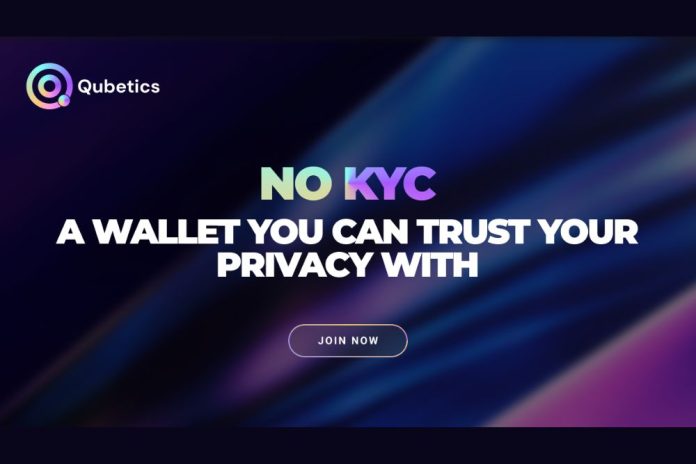It’s November 2024, and the crypto scene is sizzling. Solana’s breaking records, Ripple’s future looks brighter despite a recent dip, and new contenders like Qubetics are stepping up in a big way. Experts are calling Solana one of the best cryptos to buy in November 2024, thanks to its soaring activity and decentralized app growth. Meanwhile, Ripple’s XRP is holding steady after hitting $1.20 earlier this month, but analysts predict a major bounce. And let’s not forget Qubetics—a project in its presale phase that’s already redefining how crypto payments work.
While Solana and Ripple focus on speed and network performance, Qubetics is tackling something bigger: usability. It’s one thing to process transactions fast, but what about making crypto so seamless that even your grandma could use it? With No KYC wallets and innovative features like smart contract conversions, Qubetics isn’t just catching up; it’s leaping ahead. At $0.025 per $TICS token in Phase 10 of its presale, the project has raised over $3.2 million, sold 220 million tokens, and boarded 4,100+ holders. The next phase will see a 10% price jump, so early adopters are locking in while they can. Let’s dive into what makes these three stand out in scalability and beyond.
Qubetics: Making Crypto Work for Everyone
Qubetics isn’t just another crypto wallet; it’s a complete ecosystem designed to make digital payments as simple as swiping a card. The No KYC non-custodial Multi-Chain Wallet is its crown jewel, enabling users to send, receive, and store crypto without the headache of complex verification. Plus, it works on iOS, Android, and desktops—total game-changer.
Imagine this scenario: you’re at a coffee shop. You whip out your phone, tap to pay in Bitcoin, and the café gets paid in fiat—instantly. That’s the magic of Qubetics’ smart contract conversion mechanism, which shields users and businesses from market volatility by converting crypto to fiat at the point of sale. No more waiting for prices to stabilize or worrying about wild fluctuations.
But it’s not just about convenience; it’s about opportunity. Small businesses can accept crypto without needing a crash course in blockchain, and freelancers can get paid in crypto without the hassle of converting it manually. Say goodbye to clunky systems and hello to streamlined payments.
Now, let’s talk about money. In Presale Phase 10, 1 $TICS token costs $0.025. A $100 investment gets you 4,000 tokens. Once $TICS hits $0.25 post-presale, your $100 becomes $1,000—an ROI of 900%. And with the final phase seeing a 20% price hike, the early bird gets the worm. Investors are flocking to Qubetics because it’s not just another crypto—it’s a solution.
Solana: The Speed Demon of Crypto
Solana (SOL) is the Usain Bolt of blockchain, boasting transaction speeds that make Ethereum look like it’s stuck in traffic. This month, SOL surged to $263, smashing its all-time high. But speed isn’t the only thing Solana’s got going for it. The ecosystem’s seeing a revival in decentralized applications (dApps) and memecoins (yes, even Dogwifhat is making a comeback). Plus, institutional investors are pouring money into Solana, with $173 million in funding this quarter alone.
So, what’s driving Solana’s growth? For starters, it’s positioning itself as the cheaper, faster alternative to Ethereum. With low fees and a scalable network, developers are flocking to Solana like it’s the next Silicon Valley. And with Solana ETFs gaining traction, it’s no wonder analysts are calling it one of the best cryptos to buy in November 2024.
But it’s not all sunshine and rainbows. Solana’s infamous for network outages, which raises questions about its reliability. That said, its recent all-time high suggests investors are shrugging off these concerns for now.
If you’re thinking about buying SOL, here’s some quick math: At $263 per token, $100 gets you around 0.38 SOL. If Solana reaches $500 (totally possible given its trajectory), your investment doubles. Not bad for a blockchain that’s speeding toward mass adoption.
Ripple: The Comeback Kid
Ripple (XRP) is the OG of cross-border payments, and despite recent dips, it’s still a heavyweight contender. XRP hit a three-year high at $1.43 earlier this month before pulling back. Analysts predict a bounce to $1.96, fueled by regulatory clarity and growing adoption.
What’s keeping Ripple in the game? For one, the WisdomTree Physical XRP ETP is giving European investors easy access to XRP through regulated markets. Add record-high activity on decentralized exchanges (DEX) and a surge in futures open interest, and you’ve got a recipe for bullish momentum.
Here’s the kicker: Ripple’s use case hasn’t changed. It’s still the go-to for fast, low-cost international payments. But with Gary Gensler stepping down as SEC Chair and rumors of a more crypto-friendly replacement, Ripple’s legal woes could finally ease up. Imagine a world where XRP isn’t bogged down by lawsuits—that’s the dream.
If you’re eyeing XRP, now might be the time. At $1.20, $100 gets you about 83 XRP. If it jumps to $1.96 as predicted, your $100 becomes $162. Sure, it’s not 10x gains, but Ripple’s stability makes it a solid addition to any portfolio.
Final Thoughts: Who Takes the Scalability Crown?
Qubetics, Solana, and Ripple each bring something unique to the table. If you’re looking for innovation and usability, Qubetics ($TICS) is a no-brainer. Solana’s speed and ecosystem growth make it the go-to for developers and traders, while Ripple’s cross-border efficiency and regulatory potential keep it relevant.
Based on the latest research, we recommend Qubetics, Solana, and Ripple as the best cryptos to buy in November 2024. Don’t sleep on these opportunities—crypto waits for no one!
For More Information:
Qubetics: https://qubetics.com
Telegram: https://t.me/qubetics
Twitter: https://x.com/qubetics
Disclaimer: This is a sponsored press release for informational purposes only. It does not reflect the views of Times Tabloid, nor is it intended to be used as legal, tax, investment, or financial advice. Times Tabloid is not responsible for any financial losses.




